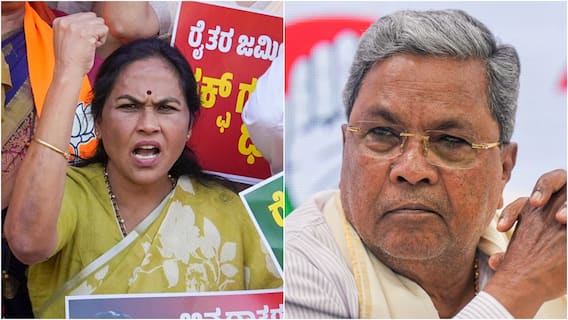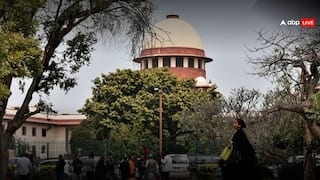Africa Splitting Into Two With New Ocean Forming. Sea Could Reach 6 Landlocked Countries Now
The continental rift will happen along the East African Rift Valley. The Somali and Nubian plates, which constitute the African Plate are drifting apart along the East African Rift Valley.

Scientists have theorised that the continent of Africa is splitting into two, and when this happens, a new ocean would form, and the countries that are landlocked would get a new coastline. This has been the subject of several studies over the years.
Recently, daily news publication St Vincent Times, quoting a study published in the Geophysical Research Letters, reported that the rift is being caused by processes similar to those occurring at the bottom of the ocean.
Where will Africa split into two?
The continental rift will happen along the East African Rift Valley, the main branch of the East African Rift System, or the Afro-Arabian Rift System. The East African Rift Valley, also called the Great Rift Valley, runs along the entire length of the system.
A lowland region that forms where Earth's tectonic plates move apart, or rift, is called a rift valley. Since these processes can occur on land as well as the bottom of the ocean, rift valleys are found on land and also at the bottom of the ocean.
Rifting has occurred over the past 1.3 million years
In a 2016 study published in the Journal of Structural Geology, researchers from Syracuse University confirmed that rifting, or the process by which Earth's tectonic plates move apart, has occurred slowly in the central basin of Lake Malawi, the southernmost lake in the East African Rift System, over the past 1.3 million years.
What is causing the African Plate to split?
The Somali Plate, which is located to the east of the African Plate, is in the process of separating from the African Plate along the East African Valley. This process began millions of years ago. The continent of Africa consists of land from both the African and the Somali plates. Hence, the region of the African Plate excluding the Somali Plate is sometimes referred to as the Nubian Plate.
The Somali and Nubian plates are drifting away from each other along the East African Rift Valley. The Somalian and Nubian plates are considered as a single African block, according to a 2004 study published in the journal Earth and Planetary Science Letters.
The Arabian Plate is drifting away from the African Plate along an active divergent ridge system, which is also causing the Red Sea and the Gulf of Aden to split. The Arabian Plate and African Plate have slowly been moving away from each other for about 30 million years. When two tectonic plates move away from each other, a divergent ridge boundary is formed.
A Y-shaped intersection depicts the region where the Nubian Plate, Somali Plate and Arabian Plate meet. The region is called the Afar Triple Junction. It is at the Afar Triple Junction that the three tectonic plates will split.

The formation of a new ocean will take tens of millions of years, according to an article published in the New York Post.
The fault lines along these tectonic plates are widening seven millimetres every year, according to an article published on American news website Quartz. When the continent splits into two sub-continents, a new ocean basin will be formed.
According to a 2020 study published in the journal Geology, the African continent is slowly separating into several large and small tectonic blocks along the East African Rift System, continuing to Madagascar. Madagascar is a long island just off the coast of Southeast Africa, and will itself break apart into smaller islands.
Africa and Indian Ocean will be redefined following the split
When this happens, Africa and the Indian Ocean will be redefined, according to the study led by Virginia Tech. This slow process of splitting is a continuation of the shattering of the supercontinent Pangea about 200 million years ago.
In a statement released by Virginia Tech, Sarah Stamps, the lead author on the paper, said the rate of present-day break-up is millimetres per year, so it will be millions of years before new oceans start to form. Since the rate of extension is fastest in the north, new oceans will form there first.
According to the study, the break-up process is more complex and more distributed than previously thought.
The region of distributed extension is about 600 kilometres wide, and spans from Eastern Africa to whole parts of Madagascar, which in turn, is actively breaking up with southern Madagascar moving with a small tectonic block, and a piece of central Madagascar moving with the Somali Plate. The small tectonic block is called the Lwandle microplate.
In 2018, a large crack appeared in the Kenyan Rift Valley. While many reports stated that the crack was evidence for the African continent actively splitting into two, an article published by The Guardian said the crack was caused by the erosion of soil from heavy rains at that time.
When did theories regarding the split of Africa start circulating?
On September 26, 2005, an eruption of the Dabbahu Volcano, located along the Somali Plate, created a large rift on the ground.
After the formation of the rift, scientists predicted that the land along the region, known as the East African Rift, will eventually break away and create a new island consisting of eastern Ethiopia and Djibouti with a new sea in between.
The Dabbahu Volcano was a result of tectonic movements of the Nubian Plate, Somali Plate and Arabian Plate.
How will a new coastline benefit landlocked countries?
According to the article by Quartz, when Africa splits into two sub-continents, landlocked countries such as Rwanda, Burundi, Malawi, Uganda, the Democratic Republic of Congo, and Zambia will get a coastline. This will help build harbours that connect the six countries to the rest of the world directly.
Moreover, the smaller portion containing Somalia, Eritrea, Djibouti, Kenya, Tanzania, Mozambique and the eastern parts of Ethiopia, where the East African Rift Valley ends, may drift away. The remaining larger Nubian Plate will see a coastline created for the several eastern and southern Africa countries that have traditionally relied on their neighbours for access to sea transport, the article said.
The countries obtaining a new coastline will also open up the possibility of directly connecting them to subsea internet cables.
Trending News
Top Headlines








































